People
‘A Dazzling and Powerful Force for Good and Change’: Friends and Colleagues Remember the Late Artist and Feminist Trailblazer Paula Rego
The 87-year-old artist died today at her home in London.
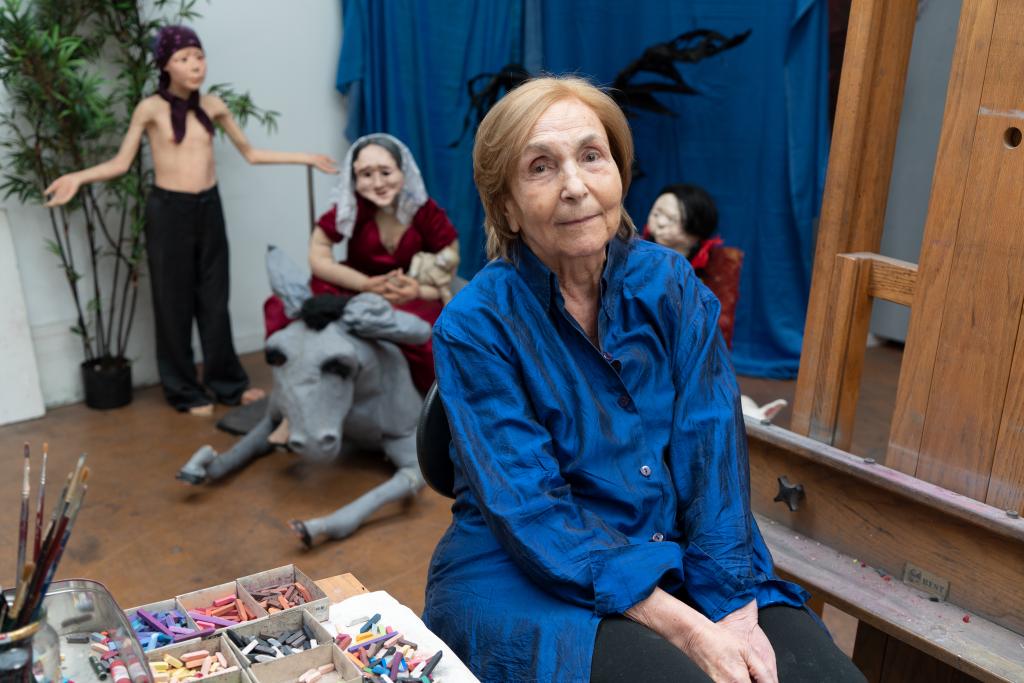
The 87-year-old artist died today at her home in London.

Sarah Cascone

Paula Rego, the painter, sculptor, and feminist force, died at her home in North London today, June 8. She was 87.
The Portuguese-British artist had suffered from a brief illness, according to Victoria Miro, her gallery since 2020. (Rego is also represented by London’s Cristea Roberts Gallery for her prints.)
“Paula was a fearless artist who painted life and the world head-on—a remarkable, dazzling, and powerful force for good and for change. I am proud that the gallery has been able to celebrate and promote her work in the last years of her life,” Victoria Miro told Artnet News in an email. “We have lost a very great artist.”
An innovative visual storyteller, Rego is known for the dark, fairytale-like quality of her figurative work, which is often Infused with political themes. She was also a noted activist, championing women’s rights and reproductive freedom.
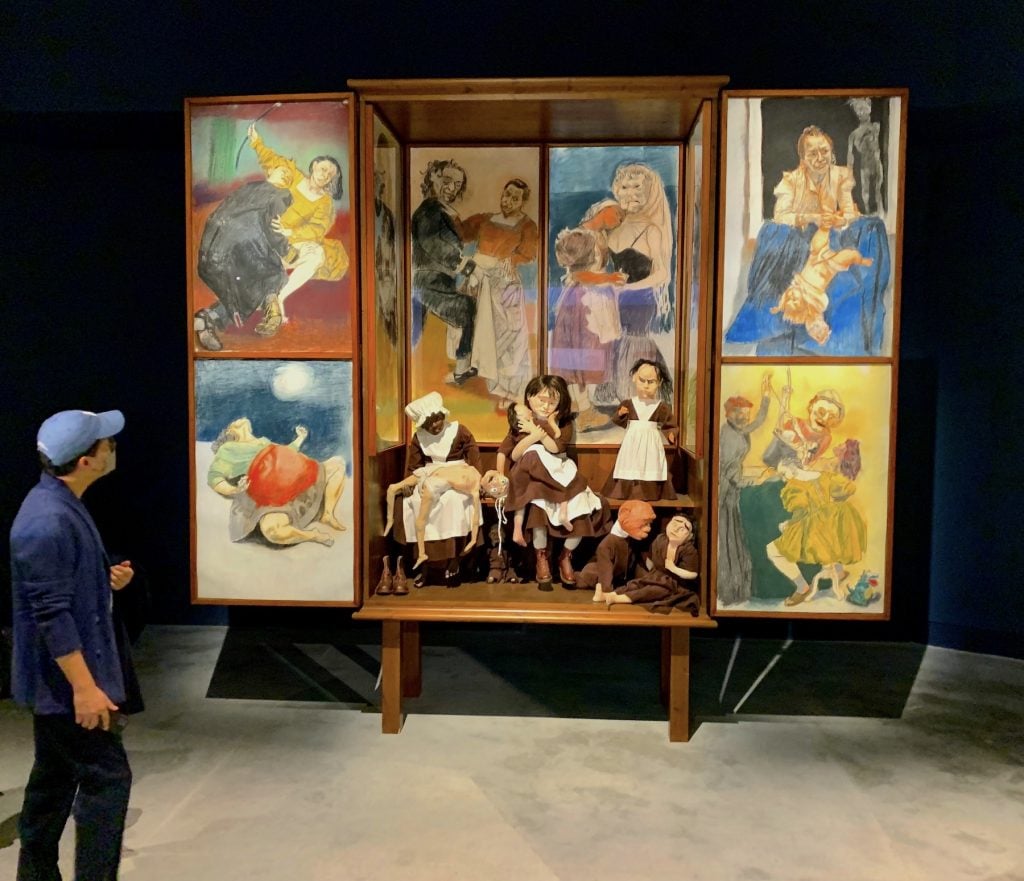
Paula Rego, Oratório (2009). Photo by Ben Davis.
Rego, who began drawing at just four years old, enjoyed a 60-year career. But—as is often the case for older women artists—she experienced her breakout moment late in life. She had a star turn at this year’s Venice Biennale, which corresponded with a show at Miro’s Venice outpost (on view through June 18).
At the biennale’s international exhibition, “The Milk of Dreams” (through November 27), Artnet News critic Ben Davis found a darkened room entirely dedicated to Rego’s paintings and sculptures to be one of the event’s “spectacular set piece moments.”
“I am extremely saddened by the passing of the extraordinary artist Paula Rego,” Venice Biennale curator Cecilia Alemani, told Artnet News in an email. “Throughout her life, Rego worked tirelessly and uncompromisingly on very complex subjects like freedom of speech, women’s rights, abortion rights, constantly condemning conservative and reactionary politics.”
She added: “Her contribution goes well beyond the art world: She has been a model for an entire generation of women who looked up to her as an example of a fearless artist, never afraid of speaking up for her beliefs.”
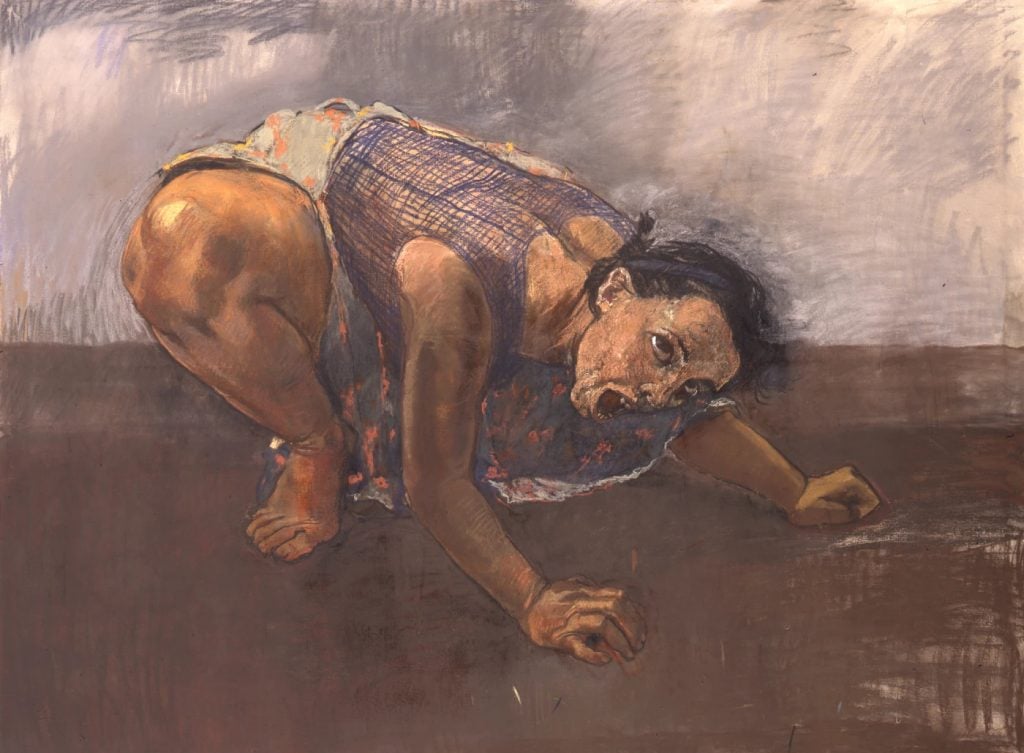
Paula Rego, Dog Woman (1994). ©Paula Rego, courtesy of the artist and Victoria Miro, London.
Born in 1935, Rego grew up under the fascist dictatorship of former Portuguese President António de Oliveira Salazar, instilling in her a spirit of rebellion against censorship that informed much of her adult work.
She moved to the U.K. in 1951 and enrolled at London’s Slade School of Fine Art the following year. Rego’s professional career began in 1962, when she exhibited with the London Group alongside the likes of David Hockney and Frank Auerbach.
She had three children with Victor Willing, a British artist she met while they were studying at the Slade, as well as multiple abortions—which she spoke about openly. The couple married in 1959 and remained together until Willing’s death, in 1988.
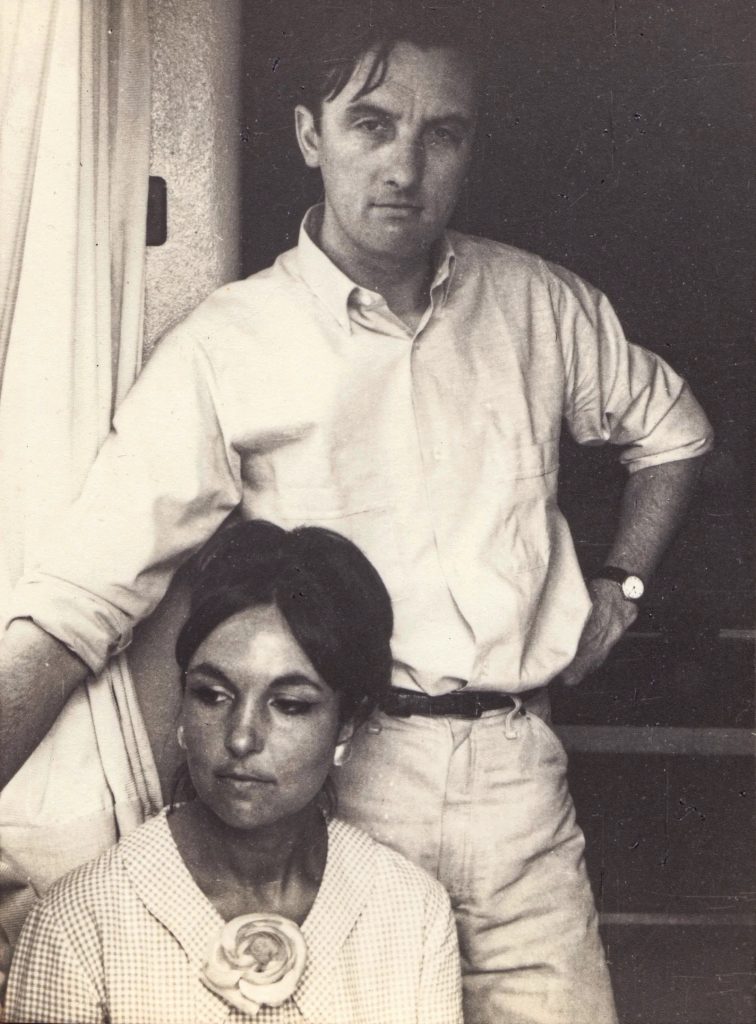
Victor Willing and Paula Rego in the 1960s. Photo courtesy of Nick Willing.
Rego’s first solo show was in 1965 at the Sociedade Nacional de Belas Artes in Lisbon, and she represented Portugal at the 1969 São Paulo Art Biennial.
But recognition was slower to come in the U.K. Rego’s first solo exhibition in London didn’t come until 1981, at the since-closed AIR Gallery. Her first retrospective opened at the Calouste Gulbenkian Foundation in Lisbon and the Serpentine Gallery in London in 1988.
“I’ve felt frustrated and broke,” Rego told Tracey Emin in the book Paula Rego: The Forgotten, published this year by Victoria Miro on the occasion of the artist’s fist show at the gallery. “It was an enormous relief whenever I sold a picture.”
More recently, however, Rego has had a spate of major solo shows. From 2019 to 2020, a touring exhibition appeared at the Irish Museum of Modern Art, Dublin; the Scottish National Gallery of Modern Art, Edinburgh; and MK Gallery In Milton Keynes, England. In 2018, she had shows at the Musée de L’Orangerie, Paris, and the La Virreina Centro de la Imagen, Barcelona.
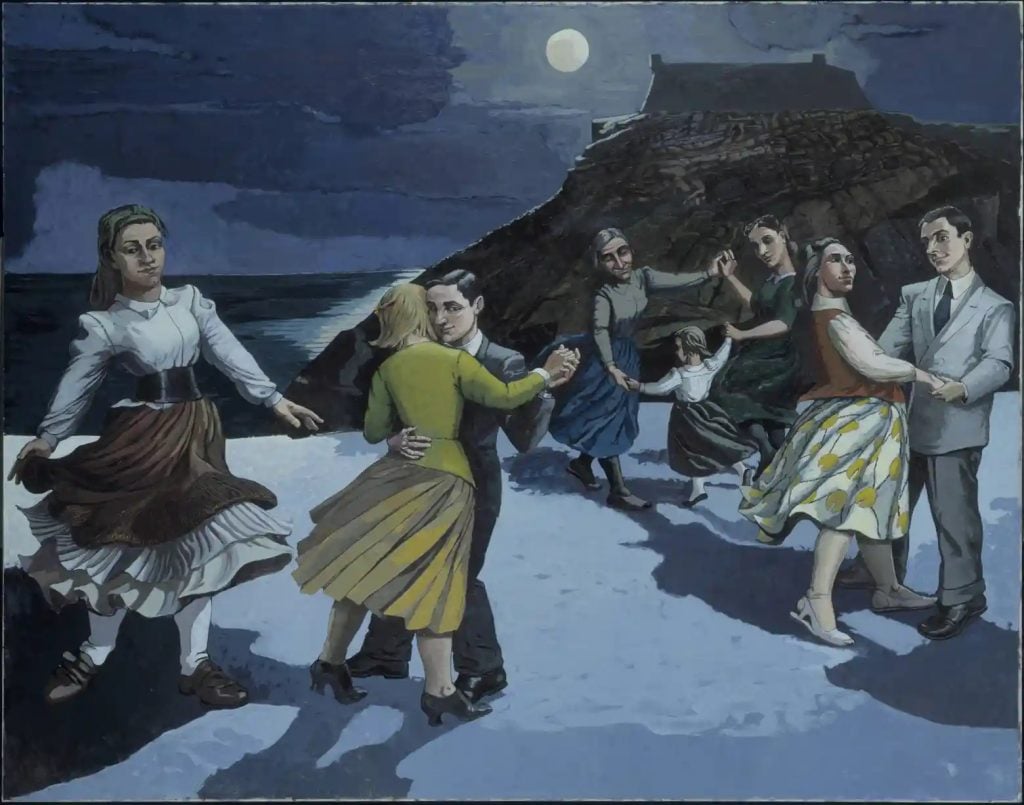
Paula Rego, The Dance (1988). Collection of the Tate Britain, London. ©Paula Rego, courtesy of the artist and Victoria Miro, London.
Rego’s largest-ever retrospective opened last June at the Tate Britain, London, and traveled to the Kunstmuseum Den Haag in the Netherlands. It’s currently on view at the Museo Picasso Málaga through August 21. A separate solo show at the Arnolfini in Bristol, “Subversive Stories,” closed last month.
“Paula Rego was one of the most original and widely acclaimed artists of our time. Over seven decades, she reinvented figurative painting and the way women are represented,” a representative for the Museo Picasso Málaga said in an email to Artnet News. “Rego sought new, different ways of telling stories with her pictures, and her works are rooted in her personal experience, while at the same time connecting with what is happening in the world.”
Influenced by mythology, folk tales, literature, politics, and art history, Rego also drew on her own personal biography to make psychologically compelling artworks that speak to essential truths about human relationships.
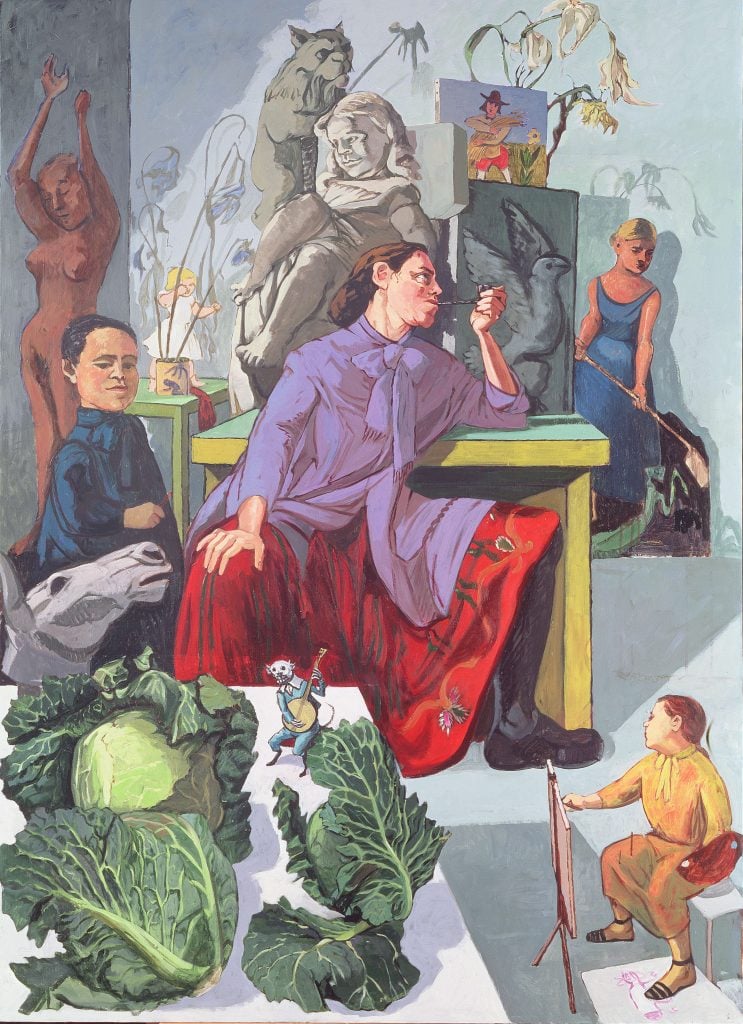
Paula Rego, The Artist in Her Studio (1993). Courtesy of Leeds Museums and Galleries (Leeds Art Gallery), U.K./Bridgeman Images, ©Paula Rego.
Many of her works were powerful illustrations of the female experience, of feminine resolve in the face of suffering and adversity, often depicting her longtime friend and model Lila Nunes.
“I paint the women I know. I paint what I see. I make women the protagonists because I am one,” Rego told the Guardian in 2021.
She began her “Abortion” series in 1998, after a referendum to legalize abortion in Portugal failed. The paintings show women recovering from illegal abortion procedures.
“It highlights the fear and pain and danger of an illegal abortion, which is what desperate women have always resorted to,” Rego told the Guardian in 2019. “Making abortions illegal is forcing women to the backstreet solution.”
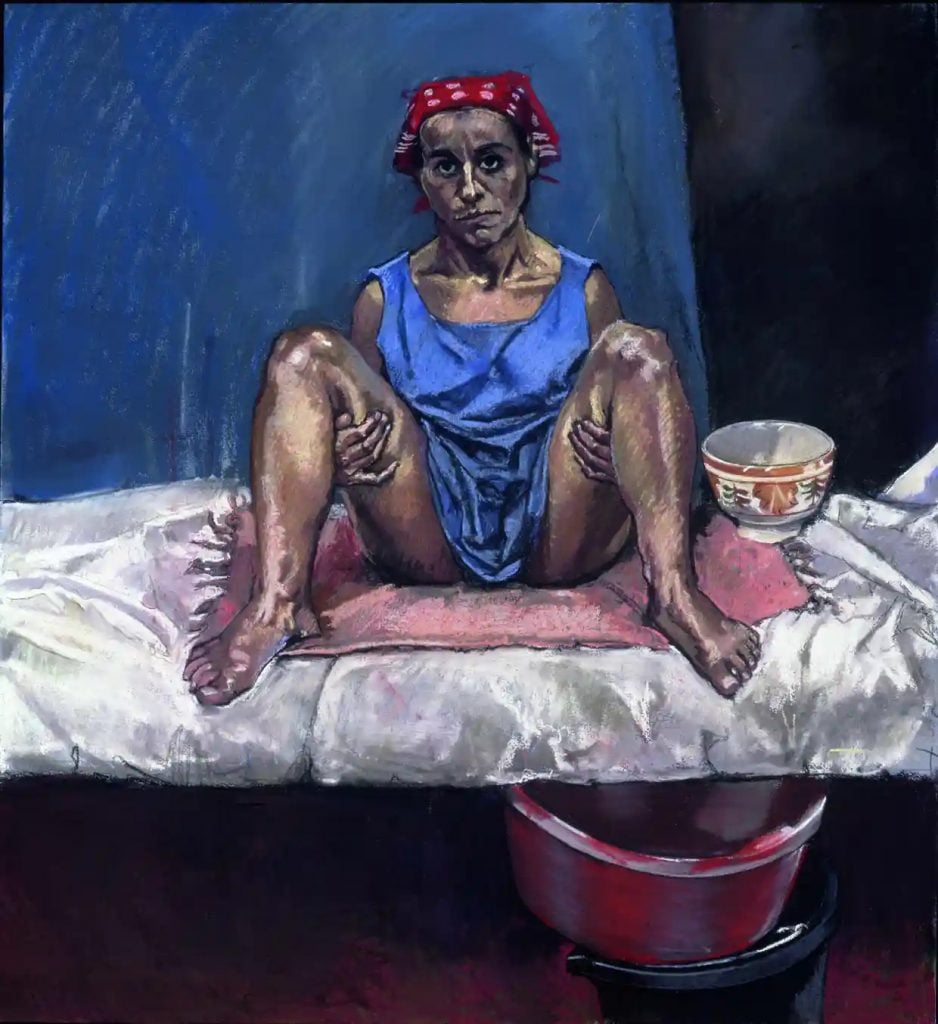
Paula Rego, Untitled No 1 (1998), “Abortion” series. ©Paula Rego, courtesy of the artist and Victoria Miro, London.
The works were later used to promote a second abortion referendum in 2007, which was successful.
“The series was born from my indignation,” Rego said in a 2002 interview. “It is unbelievable that women who have an abortion should be considered criminals.… But all this stems from Portugal’s totalitarian past, from women dressed up in aprons, baking cakes like good housewives.”
Among her honors, Rego was named the National Gallery of London’s first artist in residence in 1990 and made a dame by Queen Elizabeth II in 2010. In 2004, the president of Portugal awarded her the nation’s Grã-Cruz da Ordem de Sant’Iago da Espada.
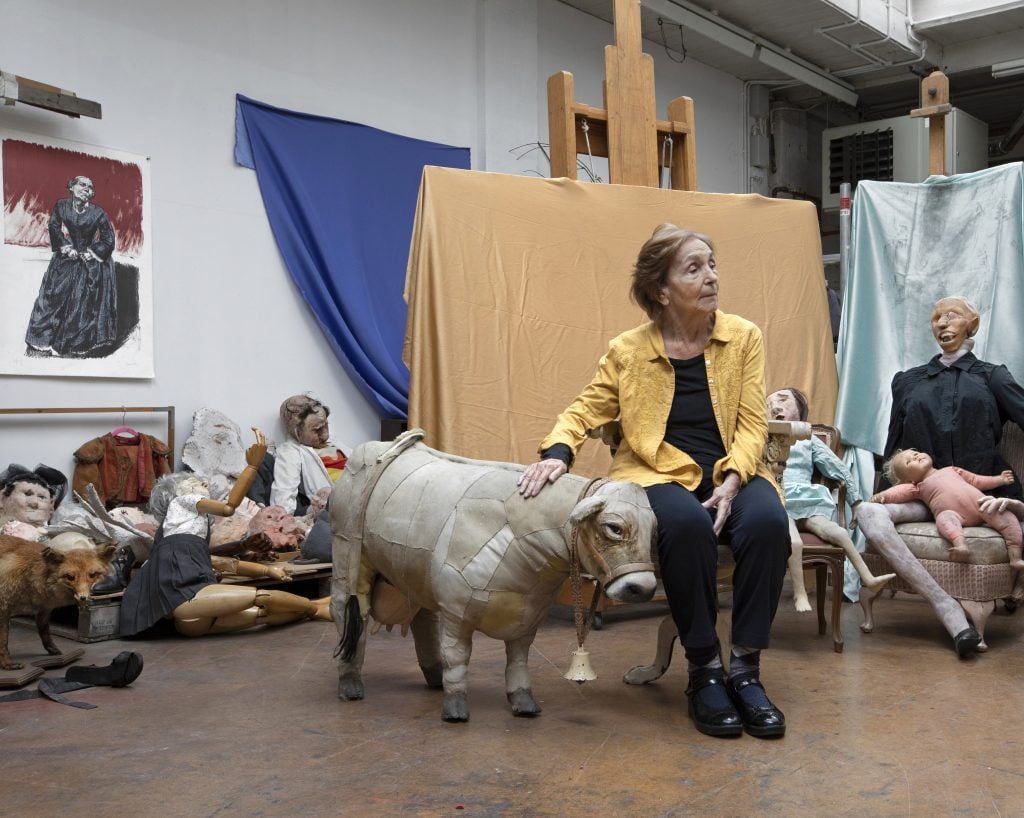
Paula Rego in her London studio, 2021. Photo by Gautier Deblonde, ©Gautier Deblonde, courtesy the artist and Victoria Miro.
In her native Portugal, the government built a museum dedicated to her work, Paula Rego’s House of Stories, in 2009. Located outside Lisbon in the town of Cascais, the museum was designed by architect Eduardo Souto de Moura and is home to a collection of 200 Rego prints, as well as loans of drawings, paintings, and preparatory works by the artist.
“Portuguese culture has lost one of its most important and irreverent creators, someone who distinguished herself as a woman, human being, and artist,” Cascais mayor Carlos Carreiras told Reuters.
Rego is survived by her three children, Cas, Victoria, and Nick Willing, as well as several grandchildren and great-grandchildren. Nick is a filmmaker who directed an award-winning 2018 BBC documentary, Secrets and Stories, about her life and career.